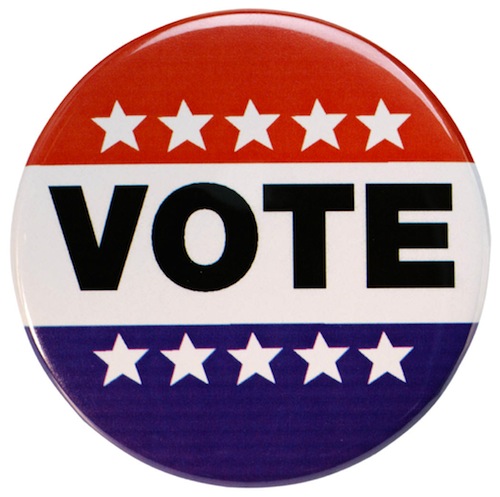Some Democrats say Clinton has a chance at winning a majority in Texas, where interest is heightened because U.S. Housing and Urban Development Secretary Julián Castro has been mentioned as a possible Clinton running mate. Castro said Friday that he isn’t being vetted as one.
They’re looking for Trump’s rhetoric to help unite Democrats behind their presumptive nominee after her hard fight with U.S. Sen. Bernie Sanders of Vermont, although signs of division still exist.
“We’re going to win. It’s going to be bigger than what Obama was able to do when he ran in Texas,” said state Rep. Senfronia Thompson, D-Houston. “Donald Trump has done one thing for us. He’s united us.”
Others simply are hoping for some progress, given the steep hill ahead of Democrats who last won a statewide election in 1994. The last time a Democratic presidential candidate lost to a Republican by only single digits in Texas was in 1996, when President Bill Clinton defeated Republican Bob Dole nationally and Reform party candidate Ross Perot got 7 percent of the vote.
“I think that the best that Democrats can hope for this cycle is that we’re getting better,” said Democratic strategist Colin Strother. “What Democrats can hope for this cycle is that everybody gets a little more engaged … that they get out there and start busting their knuckles and building our list and improving our fundamentals.”
Rice University political scientist Mark P. Jones put some parameters on what “better” could look like for Democrats.
“‘Better’ is keeping Trump’s victory in the single digits, and taking back somewhere around a half-dozen state House seats, taking back Congressional District 23 and turning Harris County blue,” Jones said.
In Harris County, he said, that means reclaiming the sheriff’s office, flipping the district attorney and tax assessor-collector offices and sweeping the overwhelming majority of countywide judicial elections.
That’s basically in line with what I suggested previously. On a great day, Dems could pick up two or three more House seats, and it’s not crazy to suggest that Fort Bend County, where Barack Obama won 48.5% of the vote in 2008, could be flipped, but they got the basics. I will note again that an under-the-radar opportunity for Dems is in the district Court of Appeals races. Here’s Texas Lawyer on this possibility:
But political experts who’ve taken a closer look at judicial races in Texas believe there’s one very important set of elections where Trump and his bombastic behavior could do some serious damage to his party’s ballot mates.
If a Trump effect is going to be felt anywhere in Texas, they believe it’s most likely to occur on Republican-held intermediate courts of appeals based in large Texas cities. Those races draw a pool of a mix of voters from both urban and suburban counties. And the split between Democrat and Republican votes have grown much closer in those courts in recent years.
Two simple things have to happen for the Trump effect to upset a down-ballot races in Texas, according to Cal Jillson, a Southern Methodist University political science professor who had studied the state’s voting trends for years.
First, Democrats in urban counties have to come out and vote at full strength to vote against him. And second, Republican voters who are turned off by the bigoted and often offensive candidate have to stay home on Election Day in November.
“When you think about Texas’ major cities, the inner cities are blue, the inner ring suburbs are purple and the outlying suburbs are red,” Jillson said. And the biggest problem for Republicans can be found in the purple suburbs, where stalwart Republicans may be turned off by Trump, he said.
“Two thirds of Republicans didn’t vote for Trump, but most are making their peace with him. And the money people are coming back to Trump,” Jillson said. “But … for a party to be competitive, they have to pull 90 percent of their electorate. And if you’re only pulling 85 percent up to 90 percent, you’ll lose. And that will effect congressional races and some state races.”
And the best place to watch the Trump effect in action on election night might be Houston’s First and Fourteenth Courts of Appeals and Dallas’ Fifth Court of Appeals. Those courts, which have six seats up for grabs, are based in solid Democratic counties but are surrounded by numerous smaller red counties that have made those courts safe seats for Republicans for more than two decades.
The Trump effect has Democrats believing they now have the best shot ever for electing a complete slate of candidates to the Houston and Dallas courts of appeals. Democrats mounted a complete sweep of trial court races in Dallas County in 2006 and nearly took all of those seats in Harris County in 2008.
Those aren’t the only ones to watch. Dems lost a seat on the 13th Court of Appeals in the 2010 debacle, for example. That bench, held by 2008 Supreme Court candidate Linda Yanez, is up for re-election this year, and Dems have an experienced candidate in a judicial district that gave over 58% of the vote to a Democrat in 2008. There are Democrats running for Republican-held benches on the 4th (anchored in Bexar County) as well. The 13th should be the easiest pickup, with perhaps the 4th being next, and the 1st, 5th, and 14th more challenging still, but those are all opportunities that should be watched. The weeds get deeper from here, but you get the idea. There are available gains and attainable goals. We need to define what we want and figure out how we want to get them.

